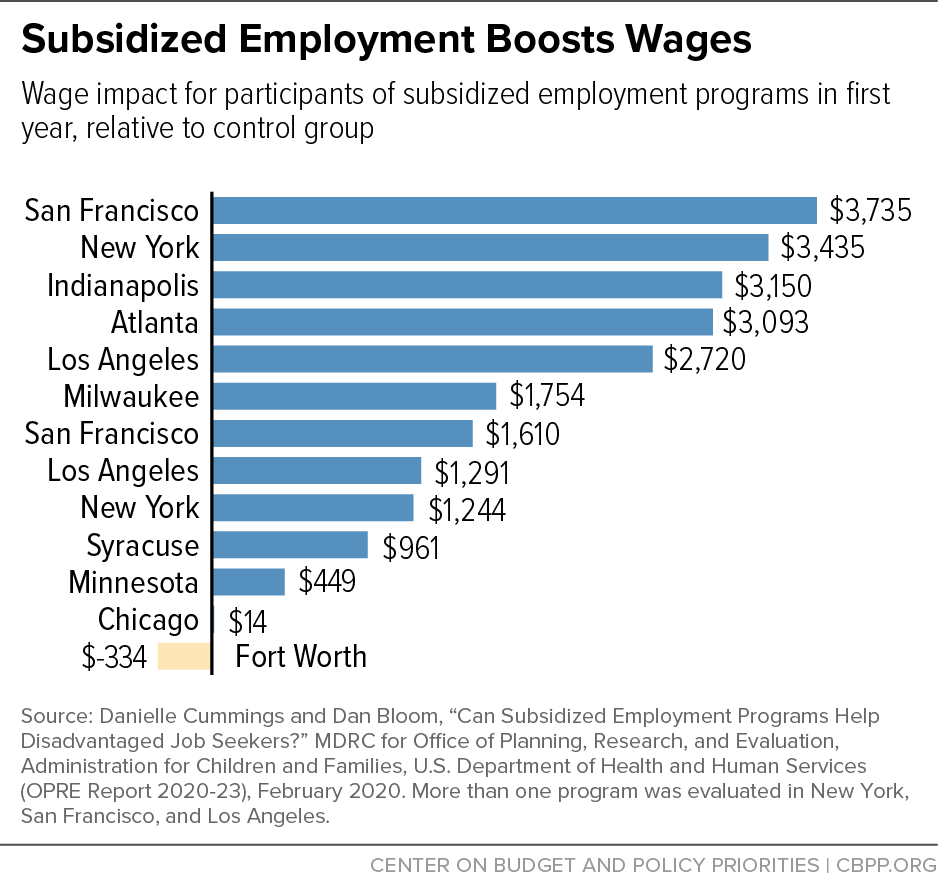BEYOND THE NUMBERS
Subsidized employment, a proven job placement tool for those facing the greatest employment barriers, should be a part of any legislative package to help the millions who remain out of work in the uneven economic recovery. President Biden’s American Jobs Plan calls for a new subsidized employment program, and Congress should ensure robust funding for one in the recovery legislation they will consider soon.
The job market is weaker than the unemployment rate suggests, and the pandemic has laid bare the economy’s systemic inequities. Workers of color, workers without a college degree, women, and immigrants have experienced a disproportionate share of job losses in the past year. Widespread school and child care closures have also hindered the labor force participation of parents with school-age children.
Long-term unemployment nearly quadrupled between February 2020 and February 2021; at more than 40 percent of unemployed workers, the share has nearly reached the Great Recession’s historical high. Long-term unemployment is associated with lower wages for years — up to 20, some research finds. And recessions hit Black workers particularly hard. Largely due to hiring discrimination and other systemic inequities, their unemployment rate rises more in recessions — as it did in the latest — and falls more slowly in recoveries than the rate among white workers.
Subsidized employment, in which the government temporarily subsidizes some or all of an individual’s wages, can help people overcome these barriers, better weather the economic crisis, and potentially get connected to permanent, unsubsidized employment.
Subsidized employment significantly increases wages and employment in the short term, decades of evaluations have found. A recent evaluation of 13 programs found that participants in almost every program had higher income — $3,700 higher, in one program — in the first year after starting subsidized employment than similar individuals not chosen for the program. (See chart.)
The recovery from the Great Recession illustrates that it’s possible to implement flexible, large-scale job creation programs relatively quickly and at reasonable cost. In 2009-2010, subsidized employment placed more than a quarter-million low-income unemployed people in temporary, subsidized jobs. Those jobs helped families afford basics like food and utility bills, supported employers’ staffing needs, and helped communities meet increased need for public services. And states controlled costs with steps such as capping hourly wages, sharing costs with employers, and limiting the number of hours that could be subsidized.
The American Jobs Plan calls for subsidized employment to address long-term unemployment, and Congress should act on that call — and help ensure an equitable recovery — by including robust funding for it in any recovery package. The Jobs for Economic Recovery Act, recently re-introduced by Senators Wyden, Baldwin, Van Hollen, Bennet, and Booker, provides a starting point for an equitable and scalable program.

